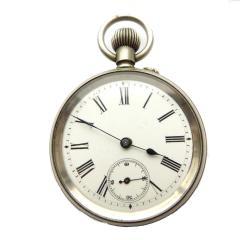Barrel arbor screw broken
-
Recently Browsing
- No registered users viewing this page.
-
Topics
-
Posts
-
By Neverenoughwatches · Posted
Nice interesting diver Razz, i have a sheffield dress watch, different movement altogether. Could be a wrong motion works part, how does the setting feel before fitting the cannon pinion, clutch and intermediate wheel meshing ok ? The less traditional setting design could be suspect, the second wheel has a slip clutch assembly, that most likely needs looking at. LA is 42 ° Razz Tbh i much prefer to call the complete unit the lever, then use the seperate names for all of its components. Such as guard pin, fork, fork horns, fork slot, lever arm, pallets , pallet arms, pallet slot, pallet stones. I suppose pallet fork is the combination of the two opposite ends that make up the lever, its also called the anchor which is descriptive of its appearance. Its a pretty basic 1930s swiss lever movement H and yes Nev was meaning the pallet fork. -
By RichardHarris123 · Posted
The pallet fork should really be called a lever, English lever, Swiss lever etc but most people including myself call it a pallet fork. -
By RichardHarris123 · Posted
Seiko have case numbers, I can't see it on your photos. If you can find that we can look for a genuine crown. If not, you need to measure the diameter of the stem, the distance between the lugs and the depth of the lugs. The case number will be something like this. -
I'm not sure what kind of movement this is, but I'm curious to know if you're using the word "lever" as a synonym for "pallet fork"?
-
Actually kind of rough, maybe munute wheel pinion problems? Is the 2.73mm canion oinion which seems rarer and not availble on Cousins UK. The seconds hand works and suprising nice amplitude but don't know the lift angle and BE this one says 17 j but is a pin pallet as well. Cap jewels on the escape and drive train pivots. Interestingly in has both water proof and shock resistant on the caseback and dial. Puts this around 1969 or '70? The double bezel that works independently is cool has the pi symbol on each. Wonder if it can be used like a slide rule ir something...
-








Recommended Posts
Join the conversation
You can post now and register later. If you have an account, sign in now to post with your account.
Note: Your post will require moderator approval before it will be visible.